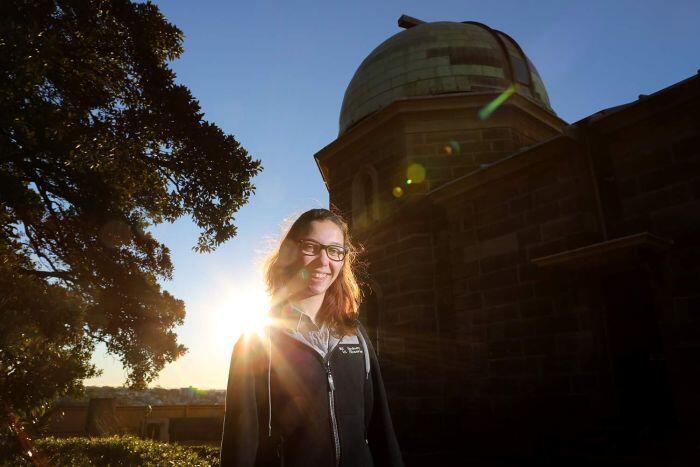Tens of thousands of years ago, Indigenous Australians looked towards the sky at night to navigate their environment by reading the different constellations.
These days — despite the light pollution near major cities after dark — Wiradjuri descendant Kirsten Banks uses these same patterns in the stars to educate others about Aboriginal astronomy.
The 20-year-old tour guide and astronomy educator at the Sydney Observatory always had a fascination with space, but didn’t know much about her own cultural connection with this particular field of science.
She decided to broaden her knowledge after walking past an Indigenous map of Australia in the corridor at the observatory.
“I always knew that I had an Indigenous background but I didn’t know where I came from, so I saw that and thought, ‘My family comes from there’,” Ms Banks says.
Delving into her own cultural background while learning more about the universe, Ms Banks started to see a connection with the stories she was told as a child.
“As kids we’re always taught Dreamtime stories, but we were never really told they were Dreamtime stories.”
Connection with the landscape
Ms Banks says Aboriginal astronomy is about how constellations are intrinsically connected with the Australian landscape.
“A very important concept in Aboriginal astronomy or culture is that what is in the sky is also on the land,” she says.
“It’s all such a complex culture, it’s amazing.”
One of her favourite constellations is the Emu in the Sky, which she says can be seen in the dark parts of the Milky Way.
“Once you see it you can’t un-see it,” she says.
“The body of the emu is the centre of the Milky Way basically, or as my people see it, sometimes when it’s very high above after sunset… we see it as an emu egg in a nest instead.”
Ms Banks says the Emu in the Sky was used for many different things, including searching for food sources.
“[It] tells us when we can go looking for emu eggs,” she explains.
Cementing a future career in archeoastronomy
The third year physics student is currently working towards a future in the field of science communication and archeoastronomy — the study of the astronomical knowledge of ancient cultures.
“When you say ancient, it feels like it’s dead, but it’s still ongoing. It’s still happening today,” Ms Banks says.
“And to see that people tens of thousands of years ago have been using the skies similar to how we do today is quite remarkable I think.”
She has just begun her first astrophysics unit this semester, and one thing she loves about the field is that there’s always more to learn and share with others.
“I just want to share my passion with people. To watch people get excited about space as much as I do is so cool. It’s so exciting,” Ms Banks says.
Once she graduates, Ms Banks plans to pursue a PhD in physics and do research with elders all across Australia to learn about their use of astronomy.
“I’m very much looking forward to going to country and learning from the roots of it all,” Ms Banks says.
“There’s a lot of [Aboriginal] countries out there. There’s over 250 different groups, so it might take a while.”
Ms Banks will be running a series of workshops during National Science Week in Sydney, teaching children about how Aboriginal and Torres Strait Islander cultures navigate the skies and the land through special stories and signs.
Source: http://ab.co/2uUfN6Z











